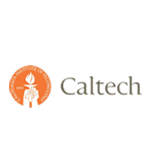
E-LEARNING FOR KIDS VS TRADITIONAL LEARNING: WHICH IS BETTER?
As the world adjusts to the "new normal" brought on by the COVID-19 pandemic, education has seen a significant shift towards e-learning. This digital platform has transformed the way young learners are taught and has become an alternative to traditional classroom settings. However, the debate between e-learning for kids and traditional learning remains a topic of contention among parents and educators. Both methods have their benefits and drawbacks, and it is vital to understand them before deciding which learning platform is better suited for a child.
- Introduction to e-learning for kids and traditional learning methods
- Advantages and disadvantages of e-learning for kids
- Advantages and disadvantages of traditional learning methods
- Factors to consider when choosing between e-learning and traditional learning
- Future of education: How e-learning for kids may shape the future of education?



Get Into The Finest Schools Using Our Renowned Tutors

Introduction to e-learning for kids and traditional learning methods
In today's digital age, e-learning has become increasingly popular, especially for kids. E-learning is a form of learning that uses electronic technology as a delivery method, and it has become a great alternative to traditional learning methods. On the other hand, traditional learning is the conventional form of learning, which takes place in a physical classroom, and involves the use of printed material and face-to-face interactions between students and their teachers. In this blog post, we will explore the pros and cons of both e-learning for kids and traditional learning, and ultimately decide which method is better.
Etutors. The Best Tutoring Company. Proven Results
You’ll Quickly & Easily Get Remarkable Results With Etutors.Live
Advantages and disadvantages of e-learning for kids
E-learning for kids has several advantages, such as the ability to study at their own pace and schedule, access to a vast array of educational resources, and the possibility to practice what they learn through activities and games. Additionally, e-learning platforms can track progress and provide personalized feedback to students, motivating them to continue learning. However, e-learning also has its drawbacks, such as the lack of face-to-face interaction with teachers and classmates, the risk of distractions and lack of engagement, and the dependence on technology, which may not always be available or reliable. It is important to weigh the pros and cons carefully to determine if e-learning is the best fit for a child's learning style and needs.
Advantages and disadvantages of traditional learning methods
Traditional learning methods have been used for centuries and still continue to be used by many educational institutions. One of the advantages of traditional learning methods is that it provides face-to-face interaction between the teacher and the students. This allows students to get instant responses to their queries which is not possible in online learning. Moreover, classroom learning provides social interaction opportunities which are crucial for a child’s development. However, traditional learning does have its drawbacks too. A disadvantage of traditional learning is that it can be rigid and inflexible, with set class schedules and a lack of personalization for individual students’ learning needs. Also, traditional learning methods can fall short in keeping up with the changing demands of technology as children might find the methods outdated and unexciting causing them to lose interest in learning.
Ready To Master Your Subject?
Talk To An Expert Who Will Help You Easily Succeed…
Unlock Your Potential with Great Tutoring at Great Prices!


Factors to consider when choosing between e-learning and traditional learning
When deciding between e-learning and traditional learning, several factors need to be considered. First, the student's learning style should be taken into account, as some students may benefit more from hands-on, face-to-face instruction, while others thrive in online, self-paced environments. Second, the student's access to technology and the internet must also be considered, as e-learning requires reliable access to both. Third, the availability of qualified instructors and a supportive learning environment is crucial for traditional learning, while e-learning often relies on pre-recorded lectures and interactive materials that may not provide the same level of personalized support. Finally, the cost and time required for each option should also be assessed, as traditional learning may be more expensive but provide a more comprehensive education, while e-learning may offer more flexibility but require more time-management skills. Ultimately, the choice between e-learning and traditional learning depends on the individual student's needs and resources.
1
In the battle between e-learning and traditional learning, the winner is ultimately determined by the needs of the child.
2
E-learning offers unparalleled opportunities for personalization and engagement, but nothing beats the human touch of a great teacher.
3
The key to successful education is not the mode of delivery, but the quality of the content and the passion of the learner.
Future of education: How e-learning for kids may shape the future of education?
E-learning is rapidly transforming the way education is delivered to children. With the increasing availability and accessibility of technology, it is clear that e-learning for kids is here to stay. In fact, it may very well be the future of education. E-learning has several advantages over traditional learning, such as the ability to learn at one's own pace, flexibility in scheduling, and the use of multimedia to make learning more engaging. As the technology continues to improve and learners become more comfortable with it, we are likely to see an even greater shift towards e-learning for kids. This may lead to a more personalized and effective education system that tailors itself to the needs of each individual student. Overall, the future of education is exciting, and e-learning for kids is set to play a major role in shaping it.
E-learning is not a silver bullet, but it can be a powerful tool in the arsenal of a committed and thoughtful educator.
E-Learning for Kids Emerges as a Powerful Education Tool, Challenging Traditional Learning Methods
Overall, e-learning for kids has revolutionized the online education industry and challenged traditional teaching methods. It has allowed for greater accessibility and affordability to quality education, reaching children in remote or disadvantaged areas. The flexibility of online learning has also given children the opportunity to customize their own learning experience and pace, increasing the chances of retention and understanding. However, it is important to note that e-learning should not completely replace traditional methods, as human interaction and socialization are crucial aspects of learning. Nonetheless, the emergence of e-learning for kids has opened up a world of possibilities for educational advancement and has paved the way for a more inclusive and diverse future.













